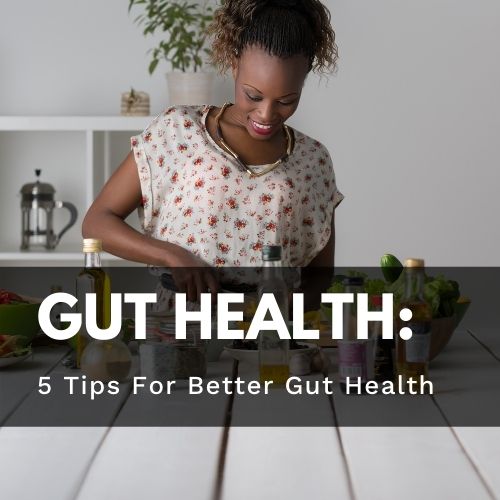Your Cart is Empty
COLLECTIONS:
SPECIAL OFFERS:
LEARN:

Top 10 Skincare Ingredients to Avoid
February 12, 2025 4 min read
It’s estimated that women put an average of 168 different chemicals on their body before they even walk out of the door in the morning (1).
From shampoo, to lotion, to mascara; toxic chemicals are found in a variety of products that we’re using on a daily basis.
Although women typically use more products than men, there are also toxic chemicals found in men’s shampoos, soaps, aftershave cream, etc.
Unfortunately, these chemicals can have a negative impact on our health, even at low-level exposure (2,3).
This article will talk about how there’s a lack of regulation related to chemicals in beauty and skincare products, the top chemicals to avoid, and some clean beauty brands to switch to instead.
Why You Need Natural Products
It’s been over 80 years since Congress last voted to regulate cosmetics (4).
The current laws that we do have don’t even require cosmetic products and ingredients to have FDA approval before going on the market (5).
According to the FDA, “Cosmetic manufacturers have a legal responsibility for the safety and labeling of their products,” but not all companies have our health as their priority (6).
Although the FDA does ban eleven toxic chemicals from being used in beauty products, that number is way too low.
In fact, some countries ban a lot more. For example, Europe bans 1,400 chemicals from their product (7).
It’s obvious there’s a lack of regulation, which is why we need to educate ourselves

Top Ten Ingredients to Avoid
Since there’s a lack of regulation, it’s important to be your own advocate and pay attention to the ingredients that are used in your everyday products.
Below are the top ten ingredients to look out for.
1. BHA and BHT:
BHA and BHT are used as a preservative in products such as lipsticks and moisturizers. BHA is classified as a potential harming for humans, and a hormone disruptor. Studies using mice have found these ingredients to be toxic (8).
2. Parabens:
Parabens are also used as a preservative in products. They have been shown to mimic estrogen in the body, and may cause health issues. Parabens can also interfere with male reproductive functions (9).
3. Phthalates:
Phthalates are found in a variety of products including shampoos, facial lotions, and body wash. It acts as an endocrine disruptor and may impact human development (10).
4. Retinol palmitate and Retinoic acid:
Retinol is used in many anti-aging products and sunscreens. The Environmental Working Group recommends avoiding products with these ingredients while being in the sun since they can increase sun sensitivity and cause health issues (11).
5. Fragrance:
Fragrance is used in nearly all beauty products, especially perfumes, colognes, lotions, and deodorants. Studies have found that fragrances can be associated with skin irritation and other adverse health effects. Additionally, this ingredient can build up and cause damage to the environment (12).
6. Petrolatum:
Petrolatum (also known as petroleum jelly) is a mineral oil jelly that is used to lock in moisture. Petrolatum can be contaminated with polycyclic aromatic hydrocarbons (PAHs), which are associated with skin irritation, allergies, and more (13).
7. Triclosan:
Triclosan is a preservative used in many deodorants, cleansers, and facial tissues. It may interfere with hormone function, and scientists have found Triclosan in 75% of individuals tested. It can also cause irritation to skin and eyes, and also be very harmful for the environment (14).
8. Formaldehyde:
Formaldehyde is used as a preservative in a wide array of products such as nail polish, toothpaste, and baby care products. It can cause health issues and negatively impact air quality (15).
9. PEG compounds:
PEG's are petroleum-based compounds that are often used in face creams, which have been shown to cause irritation and toxicity in the body. Lastly, its function is to increases skin absorption, thus increasing the negative health risk (16).
10. Ethanolamines (MEA, DEA, TEA):
These chemicals are used as emulsifiers and foaming agents in products such as mascaras, body washes, shampoos, soaps, facial cleansers, and bubble bath. These ingredients have been associated with skin irritation, allergies, and organ toxicity (17,18).

Five Clean Beauty Brands
Although many cosmetic brands use the ingredients listed above, more and more clean beauty brands are coming out and creating products that aren’t harmful to your health.
Some examples of cleans brands include:
•Attitude: https://attitudeliving.com/ - they offer personal care products such as hair cair, body washes and soaps, hand soap, moisturizers, and skincare.
•Beautycounter: www.beautycounter.com - they offer personal care for women, men, and children including skincare, shampoo and body wash, lotions, and makeup. If you’re interested in learning more about products from Beautycounter, contact mehere.
•Inna Organic: https://innaorganic.us/ - they offer skincare including facial oils and serums, facial masks, and body lotion.
•Juice Beauty: https://juicebeauty.com/ - they offer different skincare solutions as well as makeup products.
•Primally Pure: https://primallypure.com/ - they offer deodorant, dry shampoos, body butters, bath soaks, and baby products.
Helpful Tools
Along with choosing cleaner beauty brands, The Environmental Working Group has a website and app called “Healthy Living” where you can scan and search for products to verify safety. They use a scale from 1-10 to show safety based on various health areas.
Conclusion
Many people use beauty and skincare products on a daily basis. Unfortunately, they aren’t all safe for us, and the U.S. has a lack of regulation on what ingredients can be used in products and which ones cannot.
It’s best to be your own health advocate and look at the ingredients used in the products you’re using daily. Additionally, use the resources such as the EWG’s Healthy Living App and website to check the safety of your products.
It may seem overwhelming to change out everything all at once, so focus on switching out one product at a time; first focusing on the products you use the most.
What’s one product that you can swap out today?

Autumn Enloe, MS, RD, LD, CLT
Autumn Enloe is a registered dietitian in Minnesota. She has a private practice where she focuses on helping women take care of themselves through proper nutrition, supplement and lifestyle adjustments. She provides remote nutrition coaching and frequently posts free nutrition content and recipes at her website:www.autumnenloe.com. In her free time she enjoys chasing around her toddler, laughing with her husband, creating recipes in the kitchen, and practicing yoga.
Leave a comment
Comments will be approved before showing up.
Also in Health
Subscribe
Sign up to get the latest on sales, new releases and more …
Join the Utzy Naturals Club!
Sign up and get the latest on sales, new releases, and more...









